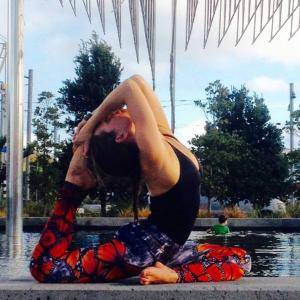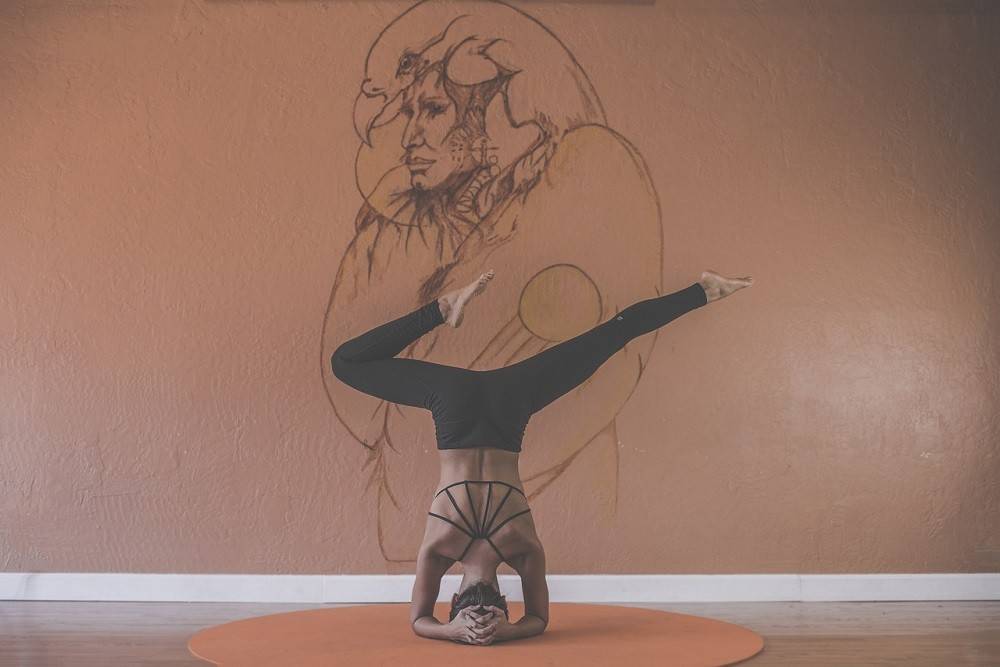
The Five Koshas Explained: How They Impact our Yoga Practice
March 8, 2018
What does it mean to “breathe into it” in yoga?
August 20, 2017Republished with permission from The Yoga Lunchbox, NZ’s most popular online yoga magazine
by Kara-Leah Grant
This is an impossible questions to answer – at least, to answer definitively, but I’m still going to give it a damn good crack. And with good reason.
Despite the fact that yoga has nothing to do whatsoever with flexibility – that flexibility is side benefit of one’s yoga practice and no measure of the depth or strength of one’s yoga practice – yoga and flexibility are intimately intertwined in the modern idea of yoga.
There’s good reason for this.
We are predominantly a visual culture, and the dominating visual image of “yoga” has become asana (yoga postures) with the flow on effect that the dominating image of “good” yoga has become deeply flexible asana.
As a result, it’s very easy to equate the depth of one’s backbend with the depths of one’s yoga practice. However, there is no direct correlation between the two.
If you have deep backbends, you may have a deep yoga practice. Or you may be naturally bendy. Or perhaps you’re a former dancer or gymnast.
Conversely, you can have difficulty with backbends and yet still have a deep and strong yoga practice.
So don’t equate flexibility with yoga – the two have a casual relationship at best.
However, that said, regular practice of yoga asana will, in time, done with awareness, likely open your body up and make you more flexible.
How flexible?
That depends on your body – on the construction of your bones, your muscles, your ligaments and your tendons, and, as we’ll find out, on your mind.
Everyone has a natural range of movement and at the full extension of your natural range of movement you will look different in your forward bend than I will.
Paul Grilley has done excellent work on the fundamental difference between tension and compression and how it informs our yoga practice. When we hit tension, we’re at a place that can be worked with using our breath and awareness. When we hit compression, we’ve reached the natural end point of our range of movement within our body.
Learning to distinguish between tension and compression is a vital aspect of our yoga practice.
Grilley defines compression as:
“The final mechanical limit to range of motion is when bones contact.”
On a practical level, if you’re in a standing forward bend and the top of your femur bone is hitting the inside of your hip joint, regardless of whether your belly is flat on your thighs or not, you’ve hit bone on bone compression, and this is the final mechanical rage of motion limit in your forward bend.
Striving to go deeper in the forward bend because you have a fixed idea of what the asana is meant to look like puts you at risk of injury.
Before you ask how long it’s going to take to “get flexible” you need to understand what compression feels like, you need to let go of fixed ideas of ideal postures and you need to learn to work with your body as it is.
Think about backbends for a moment.
Yes, the range of motion in a backbend is determined by our muscles. But it’s also determined by the physical limitations of the vertebral arches, the anterior longitudinal ligament (this runs down the inside of the spine), the disks and the superior and inferior articular processes (boney protrusions of the vertebra).
As we physically progress in our yoga practice and our backbends do deepen, it is important to know that what we’re actually doing in our yoga asana practice is practicing awareness, focus, and embodiment. The depth of our asana is a mere by-product of these three intangible processes.
If we are practicing with an eye to gaining flexibility or strength without awareness, focus or embodiment we’re not actually practicing yoga and our risk of injury is likely higher.
Plus, if we’re going physically deeper into our practice without a solid bio-mechanical understanding of the body, we can easily get stuck in cul-de-sacs, spending months trying to get somewhere that is not possible for our body.
Now that we know we all have different end-point range of movements, is it possible to answer the question, how long does it take to get flexible with regular yoga practice?
According to Duncan Peak, who has studied with Paul Grilley and many other top yoga teachers, it takes about three years.
Duncan says that if you have been regularly and diligently practicing yoga for three years – we’re talking maybe five times a week, 60 – 90 minutes a day – you’ll likely hit your end range of motion. After that, it’s possible that with a practice like Yin that works deeply on the fascia you may find another 5% or so of movement, but you’re unlikely to get any bendier.
However, this is talking about muscular openings that are not being impeded by the nervous system. This is where our yoga practice moves out of a purely bio-mechanical perspective and moves into our neurology.
It turns out that our minds, via our nervous systems, also have a strong impact on how flexible we are.
It’s entirely possible to be breathing into a yoga asana with the intention of opening the body while also on a subconscious level resisting the stretch via the nervous system, or stretch reflex.
This sets up a strange situation where you could be doing the same posture for ten years and never get any bendier at all… until you become aware of the unconscious holding via the nervous system.
And this reiterates the supreme importance of awareness in our yoga practice. Via asana and conscious breathing we are learning to make the unconscious, conscious. If we never practice with any degree of awareness, our practice won’t deepen – not on the yoga level, and sometimes not on the physical level either.
Case in point.
I’ve been practicing yoga fairly consistently since 2000 and I’ve had a mostly-daily practice since 2004. I started teaching yoga in 2006 and have done several workshops, retreats and teacher trainings. In short, lots and lots and lots of yoga over the last decade.
However, it has only been in the last six months that my forward bends have began to really open up. Granted, when I started, I had a severe handicap. My spine had been fused at age 16 and my range of motion in 2000 was abysmal.
When I did a standing forward bend, my hands could only reach my knees – there was no chance of my fingers getting anywhere near the ground.
Still, you’d think that with maybe five years on consistent practice I’d be able to reach my natural end range of motion with my belly somewhere close to or on my thighs.
Not a chance. At the beginning of the year, fourteen years into my yoga practice, my forward bends still felt stiff and halting.
Then I began practicing with Ashtanga teacher Peter Sanson. Not because I was an Ashtangi yogi, but because he was the first teacher I went to who could see how my unconscious tension holding patterns were preventing me from opening up into the posture. It was only through gaining awareness of these patterns that I was able to begin to let go of them.
The result?
My forward bends have opened up more in the last six months than possibly the last three years.
Not because of constant practice, but because of constant awareness in practice. In my case, I required the awareness of a teacher to first draw my attention to something that was so familiar to me that I didn’t know it was happening. Once Peter drew my attention to it, I was able to work on constantly bringing my own awareness to that tension in every practice.
A few weeks ago I took a class with Peter Sterios. He used a cue in the forward bends that opened up another level of awareness within my body and I found another degree of ease within my forward bends. Not because the muscles were gaining any greater level of flexibility, but because I was learning to let go of deep levels of tension within the nervous system.
This means that it’s impossible to answer the question, How Long Does it Take To Get Flexible in Yoga?
But you can understand the journey that is required to become more flexible.
First, you have to realise that flexibility looks different for every person. You need to let go of the idea of attaining some perfect posture.
Second, you need to learn to distinguish between tension and compression in your practice so you know when you hit the mechanical end range of movement within your body.
Third, you need to learn how to become aware of not just muscular tension but also mental and emotional tension. This will help you go deeper over time when it’s not muscular tension holding you back, but mental holding patterns.
Now you’ve reached a place where you can discern between tension and compression plus you can also sense all three types of tension in your body – physical, mental and emotional tension.
With that understanding you can actively continue to practice towards the limits of flexibility within your body.
Remember though, that these limits are always changing too. As we age, we do lose some range of movement. While it’s likely to be less if we have a consistent yoga practice, yogis are not immune to ageing!
But that’s yoga right – learning to distinguish between the always changing and the unchanging, the real and the unreal.
Flexibility? Nothing to do with yoga – a mere by-product.
Awareness? That’s the yoga, Cultivate the awareness and the flexibility will follow.







